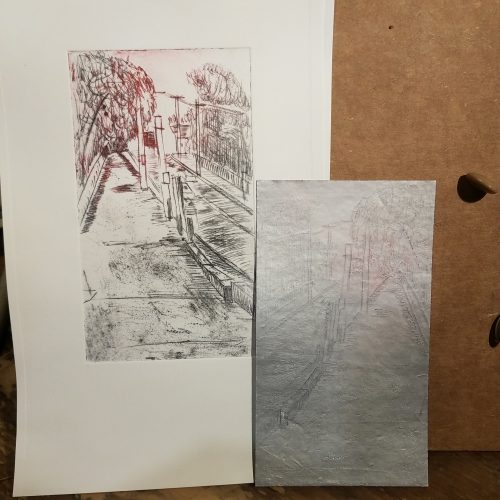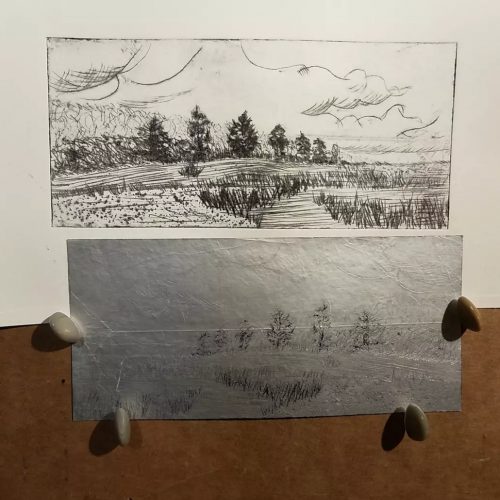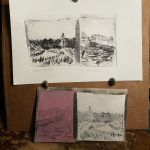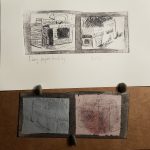My previous post utilized coffee bags stuck to stiff card, from soda cartons and cereal boxes. I found a bunch of old soft binder board and decided to try that with my next batch. We got more coffee and as soon as I emptied the bags I was delighted to find that they were made with the mylar layered bags.
More results: The paper coated and mylar layered bags work great. The all plastic work well, but one must be very careful to use gentle pressure or the plastic will warp and stretch, creating a bulge and bubble between the coffee bag and card. 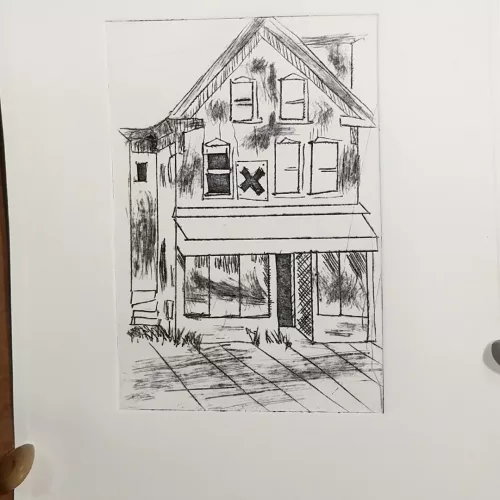
The mylar doesn’t seem to bulge or bubble, but the plastic does eventually peel away from the mylar. I was able to do 13 copies of one of my plates, but they aren’t all the same color, before the plates started to break down. I did notice that with the spray glue the coffee bag began to peel away in the middle of the plate around print nine. This seemed to happen around folds and wrinkles in the original coffee bag. I did not try to smooth these bags with a low iron, but may try that in the future.
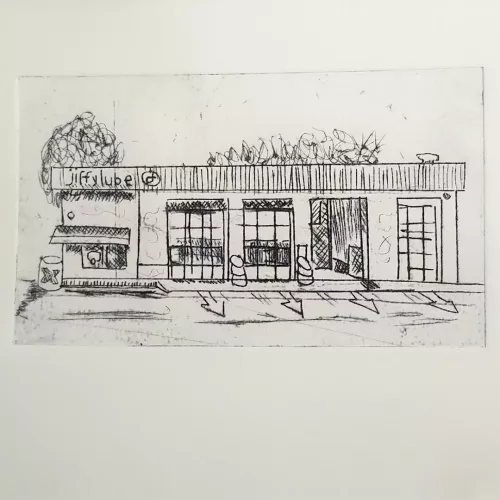
Paper backed shows the texture of the paper
With spray glue I put the glue directly onto the back side of the coffee bag. I had an epiphany when I was working on the new plates with PVA- with those I put the glue on the card. I realized that doing so allows for an even coating all over the coffee bag once it is adhered. I realized that I could do the SAME thing with spray glue and if anything the card with spray glue would be easier to handle than sticky curled coffee bags.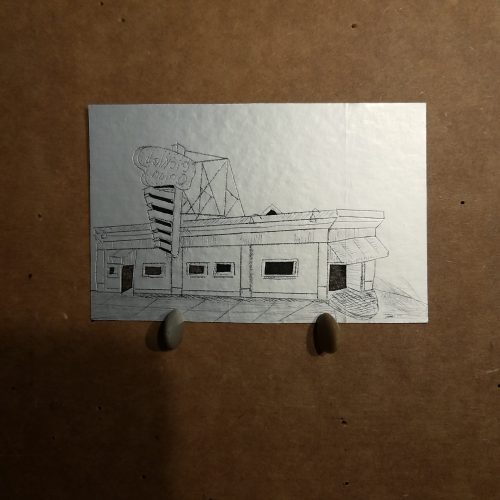
The process for making a coffee bag plate with PVA
- cut and clean a coffee bag, trim all seams away
- coat a piece of stiff carton card larger than the coffee bag piece with PVA
- apply the coffee bag to the card label side to the glue, shiny silver side up
- allow the glue to partially dry
- cover in waxed paper, and run through a press
- allow the glue to dry, under weight or pressure
- trim away excess card

I used soda carton, cereal box, and frozen pizza box card. This stuff tends to be thick, stiff, and a single layer of pulpy card. It absorbs a great deal of glue. I let it get tacky then checked to see if I needed to add more glue. Then applied the coffee bag. 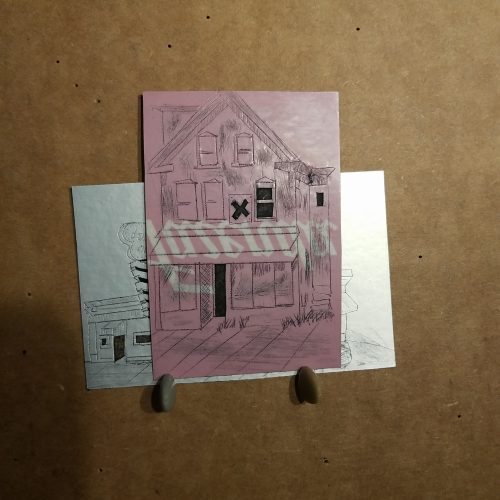
Anyway, I’ve got a lot more to experiment with when it comes to these layered plates. They are pretty simple to make and I can make a bunch of them in a sitting.
